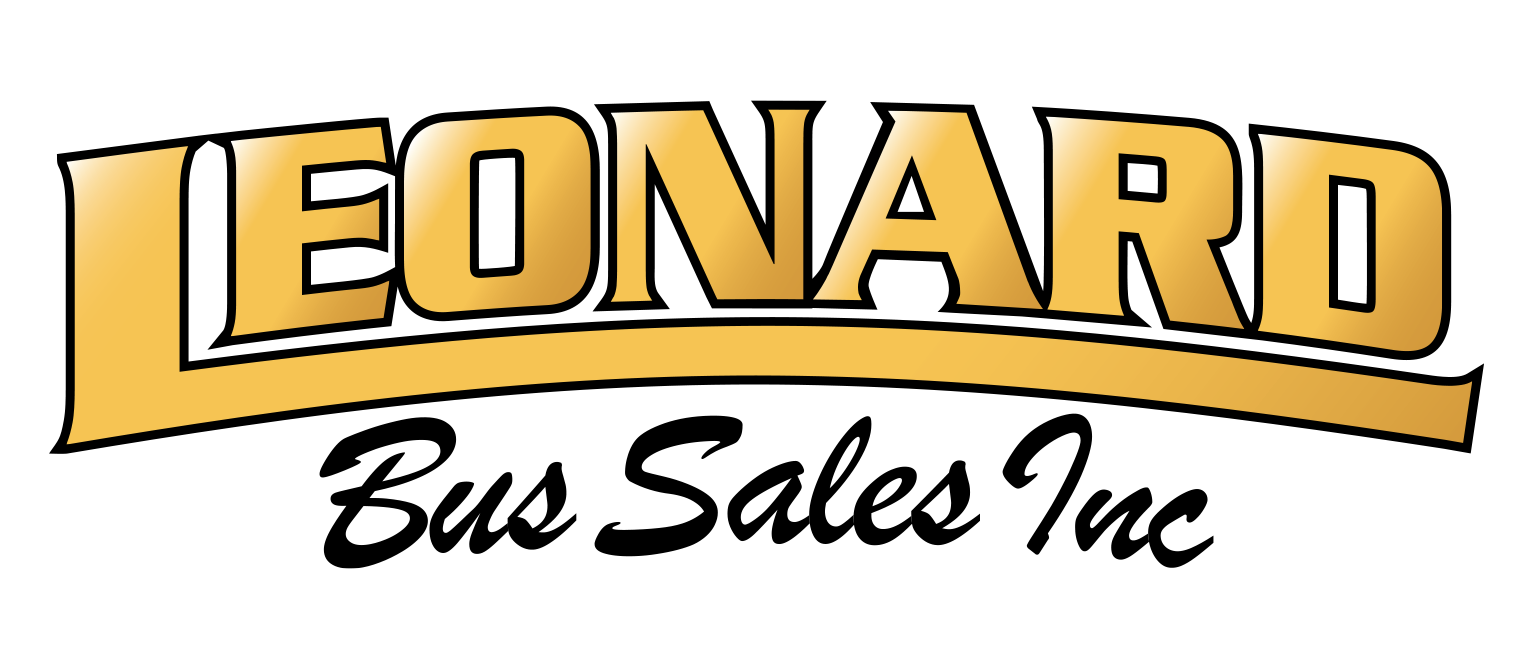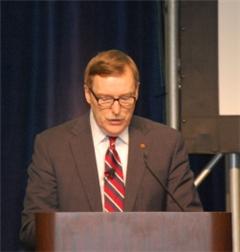March 25, 2013 — Navistar President and CEO Troy Clarke cited production of the ProStar with Cummins ISX engine as one of the positives of the company’s future success.
(The Trucker: LYNDON FINNEY)
By CLIFF ABBOTT
The Trucker Staff
3/25/2013
LOUISVILLE, Ky. — Navistar President and CEO Troy Clarke opened his remarks at the 23rd annual Heavy Duty Manufacturers Association “Breakfast & Briefing” presentation at the Mid America Trucking Show with a message for those who think Navistar is on the decline.
“Let me put the persistent rumor to rest,” he said. “Navistar is not going anywhere but up!”
Paraphrasing Mark Twain, he said; “News of our demise is greatly exaggerated.”
The company’s new chief operating officer inherited some unique issues, including EPA sanctions for failure to meet mandated emissions standards and board of directors’ conflict with mega-investor Carl Icahn.
Acknowledging the issues, Clarke quickly moved on to positive news from Navistar, noting that production of the company’s ProStar model with the Cummins ISX engine is currently ahead of schedule.
He enthusiastically announced that production of the ProStar model with its own 13-liter MaxxForce engine, revamped to utilize selective catalytic reduction (SCR).
Before moving on to issues facing the industry, Clarke thanked those “vendors and suppliers who have stood with Navistar through this transitional period.”
The rest of Clarke’s message was centered on current economic conditions.
“Uncertainty permeates our industry,” he said, “but we can only blame Washington so much. No business is immune to change.”
Pointing out that businesses must recognize change and adapt as possible, he spoke about four critical areas the industry must address in the future.
Fuel efficiency was first, with the statement “Whatever advances we make will never be enough. Diesel will continue to rise in price,” he said.
Explaining that further improvements in fuel economy will involve the entire vehicle rather than just the engine, he predicted that future gains will be incrementally smaller and will cost more to research and develop.
As for supply, Clarke predicted that the U.S. will overtake Saudi Arabia in petroleum production by year 2017.
Availability of diesel, however, won’t be an issue, since Clarke feels that natural gas will soon supplant diesel fuel to power America’s trucks.
“Just as the industry transitioned from gasoline to diesel fuel in the 50’s,” he said, “we will see a similar shift to natural gas in the near future.”
He cited fracking technology and the current boom in natural gas production as factors that will keep prices low and stable, attractive to carriers accustomed to wildly fluctuating diesel prices.
He cited availability of a viable fueling network as a barrier to adoption of natural gas in the industry, predicting that 10,000 refueling stations will be necessary to make the product viable for over the road trucking.
Clarke discussed the availability of drivers next, noting that the pool of available and ready drivers is dwindling, due in part to new regulations such as CSA. He also commented on trucking’s “social appeal,” noting that “driving a truck does not have the appeal among young people that it used to.”
He suggested that making equipment more “driver-centric” was a potential solution.
Regulation was on Clarke’s mind, too. He noted that emissions regulations have added $20,000 to the cost of a heavy-duty tractor, and warned of more stringent fuel economy mandates to come.
Clarke finished up with a review of current economic conditions, predicting that most issues will be resolved and predicting a robust second half of2013 for the trucking industry and those who supply it.
The Trucker staff can be reached to comment on this article at editor@thetrucker.com.
Find more news and analysis from The Trucker, and share your thoughts, on Facebook.

